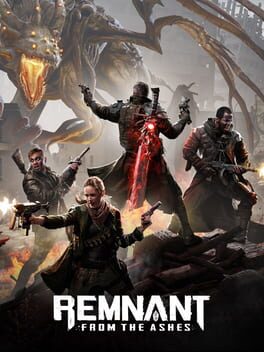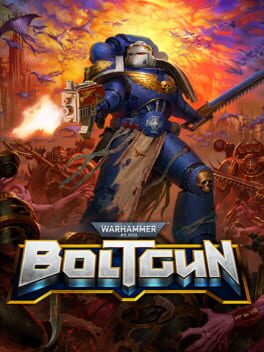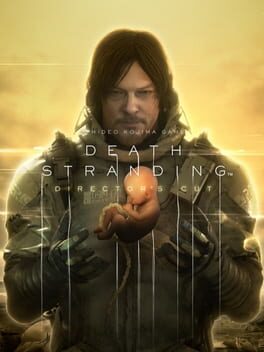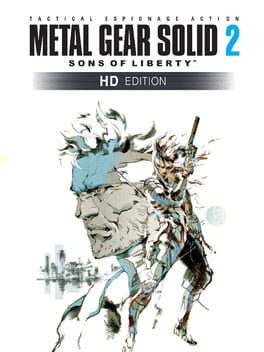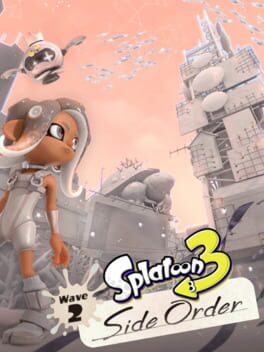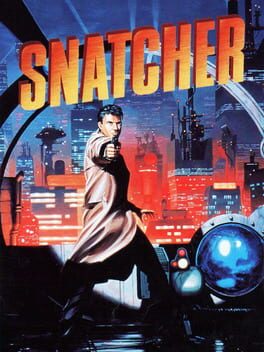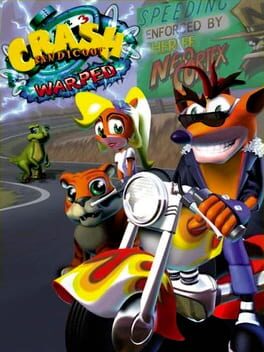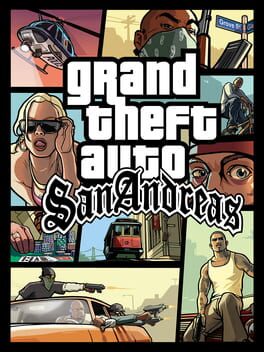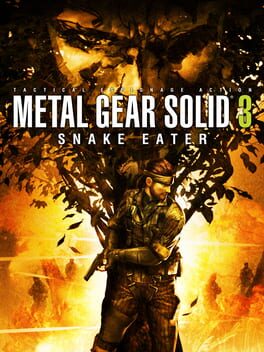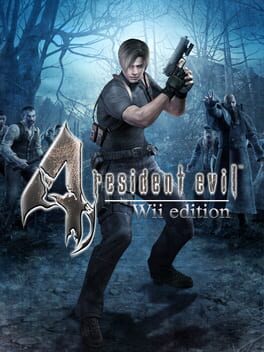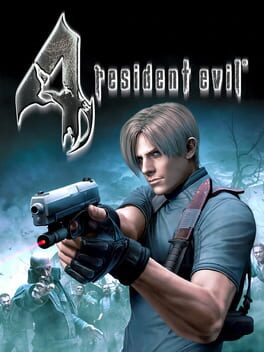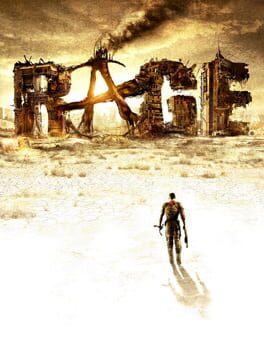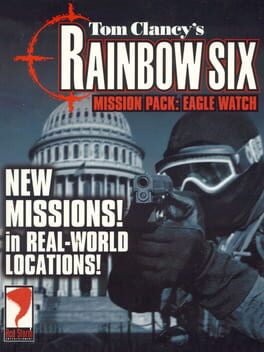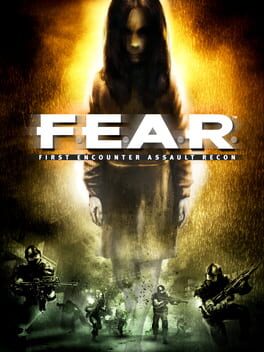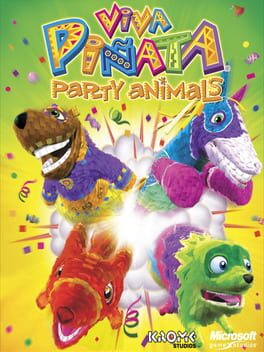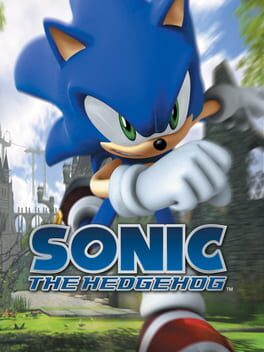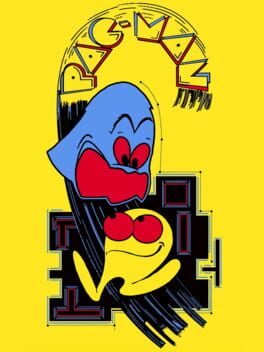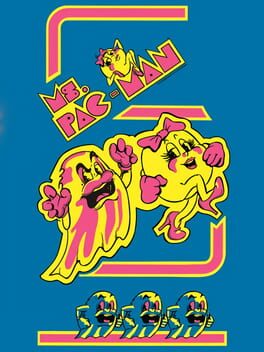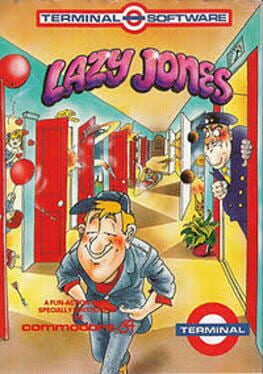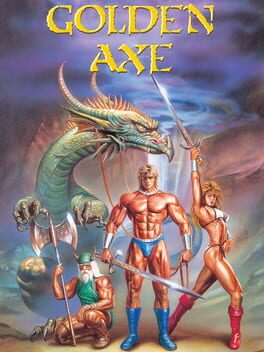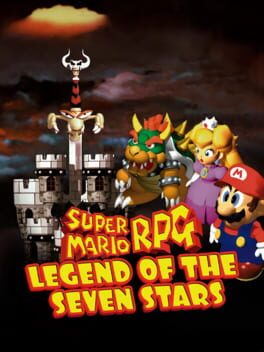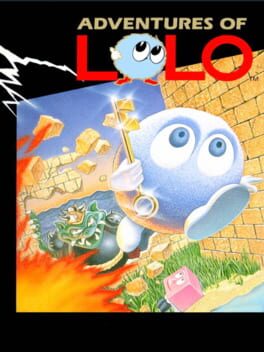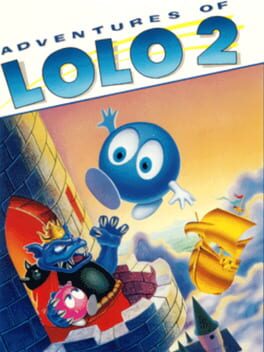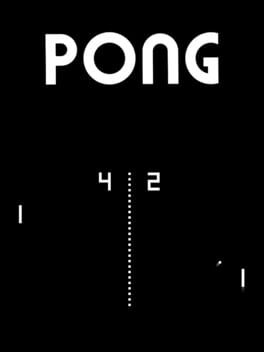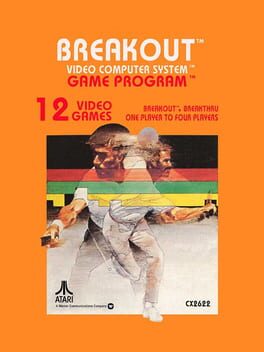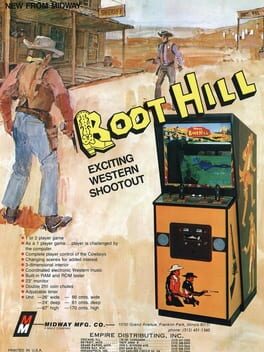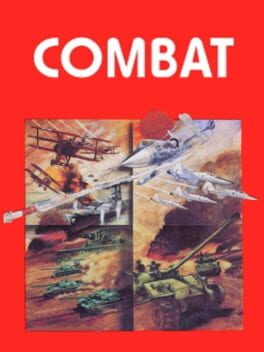JimTheSchoolGirl
403 reviews liked by JimTheSchoolGirl
The mental checkout began when I saw my first enemy looking like a jobber from a 360 era high-fantasy thing, and ended when I realised levels were ProcGen.
You have chosen to read my Princess Peach: Showtime! review. This is on you, now.
I think it's worth reflecting on how Peach wasn't really even a character in the original Super Mario Bros. She was a destination. The MacGuffin you needed to reach in order to rightfully claim you'd won the game. The idea to expand beyond that in any way was largely an act of convience, as Fuji TV's Yume Kojo: Doki Doki Panic was rebranded as the second Super Mario game. They needed a roster of four heroes, and there had only been four sentient things in the Mushroom Kingdom that weren't enemies. They took the spritesheet for Lina and drew "The Princess" on top.
I don't point this out to demean or belittle Princess Peach. Far from it. The act of repurposing and rebranding is at the very core of what videogames are. Mario, himself, was the result of seeing what could be done with an unwanted Radar Scope arcade board, and missing out on the opportunity to use Paramount's Popeye characters. OXO, Tennis for Two and Spacewar! were all experiments to see if large-scale supercomputers designed for complex business calculations and global warfare could be used for the purpose of fun. Peach has quite rightly earned the title of Princess of Videogames. A direct descendant of the cathode-ray tube amusement device.
From her first playable appearance in Super Mario Bros 2, she was treasured by little sisters, cartoon studios, and boys who valued the float-jump more than the societal pressures of homophobia and gender stereotypes. By Mario 64, her significance to the Mushroom Kingdom was fully fleshed-out, positioning the entire game within her castle, and illustrating her unwavering benevolence, ethereal presence, and also, her sense of fun with the introduction of her personally-commissioned Secret Slide. She was a true representative of videogames, and a welcoming presence for audiences who may have felt uninvited to the games gang.
In 2024, I feel Nintendo are more aware of the weight of their history. Back when they last tried this, with 2005's Super Princess Peach, there was an air of carelessness. It was a throwaway game, fobbed off to Chubby Cherub/Shrek: Reekin' Havoc devs, Tose, and launched to a market whose respect for Nintendo had already taken a beaten from the likes of DK: King of Swing, Super Mario Ball and Classic NES Series: Ice Climber. Now, Nintendo treat Peach with due reverence, having her host Universal Studios meet-and-greets in her own personal bandstand, as the highlight of millions of holidays. People are thrilled to meet her, regardless of how much spaghetti she's made for them.
Right now, we're in a very odd period for the Mario brand, overall. Nintendo have embraced the idea that there's no unified vision of what Mario is. In the last year, we've had a mainline 2D entry closely modelled on the art direction of Masanobu Sato, a major Hollywood movie that denied post-1994 backstories and reinstated the NES-era US canon, a remake of a very of-its-time mid-nineties Mario RPG, and the announcement of the remake of a very distinctly eccentric fan-favourite GameCube RPG. Mario has become Mr. Video again, appearing in all sorts of different projects, merely as a comforting presence. He's a doctor and an artist and a kart racer and an umpire and we're not supposed to take any of it very seriously.
The dynamic sits awkwardly in relationship to why New Super Mario Bros took its iconography so seriously in the first place. Back then, it was a relief to see the series discard all the bullshit and get back on target, reinstating what was Real Mario Shit. Goombas were Goombas again, and if there were any weird offshot baddies, fans would need to adopt such convoluted nomenclature as "Mega Para-Biddybuddies". It felt like the programmers had taken more control, with the world defined by hard parameter references. There's a stiffness to that approach that I have a lot of affection for, and it was the lifeblood of the Wii U era (particularly in Europe and Japan). It brought us closer to the logic of the software, subconsciously making us better equipped to appreciate and understand it. It was fiercely objective. It's easy to see why this approach wouldn't resonate with the wider public, though. If Nintendo wanted to catch on to mainstream appeal, they'd need to foresake the concrete utility of their playing pieces and expand their surface-level appeal. During the promotion of the New Super Mario Bros sequels, developers explained that Peach hadn't been made playable in the game because of how her float-jump would affect the balance of the level design. In Showtime, she doesn't even have the float-jump.
Ah - Here we are.
I don't really like Princess Peach: Showtime very much.
I could come out with excuses, justifications, characterisation discrepancies... I just think it's boring to play. Levels are formulaic and repetitive, there's little dexterity to its gameplay, the rewards system feels like you're playing the game wrong if you're not constantly digging at the scenery to find every hidden item, performance and presentation is way below where it ought to be for a game with this focus, yada yada yada... I don't think it really matters. I just didn't want to play the game very much. The first couple of days I had it, I was telling myself I was too busy to calm down and enjoy it. I spent multiple days away from it before completion, and only went back to it out of obligation. I really wanted to care less, and not bother coming back.
As much fondness as I may have for the character, I'm clearly not the target audience for this. And I don't mean to imply that it's a game strictly for young girls, either. But it probably is for fans of recent Yoshi games. I'm certainly not one of them. As I dodder around, looking at the nice artwork, but wondering what I'm supposed to be getting out of it. It's a bit of a shock to see Mystical Ninja's Etsunobu Ebisu come back to a directing role to make something so devoid of spark or humour. Though the different costumes grant Peach a range of diverse abilities, the structure of each introductory level is largely the same, and the bulk of her more intricate actions are automated. In a move that recalls Metroid: Other M, all core actions have been distributed between two face buttons, and if there's anything particularly acrobatic or impressive, it doesn't often feel like you were very involved in performing them.
Showtime is fun in theory. The level themes are bold and exciting, Peach's costumes and in-character voice clips are cute, there's a lot of great art and punny design. I saw one review compare it to Kirby and the Forgotten Land and became incensed. That's a game that loves being a game. It celebrates the medium, embraces all the tropes that come with being a platformer, and sets up young audiences to embark on a future, exploring many wonderful videogames. Showtime is like Paper Mario with all the jokes, strategy and compelling gameplay stripped out. It's an RPG without story or combat. If you wanted to dedicate a budget to having a team design a bunch of charming adventures for Princess Peach to go on, I can totally get behind that, but why make this game when your passions and energy were better suited to a series of YouTube shorts, or a pop-up book?
There's definitely things I wanted to like. I felt like I should have liked. There's several parts of the concept that feel like they're paying off on things they established with Peach's character years ago. The fact that Odyssey ended with her setting off to explore the world in a bunch of cute outfits feels like it was leading up to an idea like this. They're making a game with Cowgirl Princess Peach, for god's sake. How haven't I come away raving about it? It's just all so tame. Mermaid Peach sings underwater to guide helpful fish, and that sounds like something I should have adored, but they never take the next logical step with one of those trademark Nintendo Switch vocal themes. Why didn't they want this game to be brilliant?
Something that surprised me is how bothered I was by the stageplay concept. The notion that to some level, this was all pretend. That Peach is taking on the role of a character for each level. Her voice sounds different for a bunch of them. I don't really feel like this is a game about Peach. It's about her playing the part of generic characters. I didn't feel any sense of drama until the very end, when she emerges outside of the Sparkle Theatre, as herself. It was the first thing since the intro that the game was trying to convey as authentic. Maybe if I just believed in the game - like there was a real throughline that meant each level was an important new part of a story - I wouldn't have been so bored with it. You really don't have to do a lot to get me with this stuff. I honestly found myself crying when I first heard Odyssey attempt to finally convey Peach's perspective on her relationship with Mario. Is this what a good story has to offer a game? As it is, it felt like I'd bought a colouring-in book, and for some bizarre reason, it was important that I finish every page.
This is very much a 'me problem'. I hope I've established my criticisms as fiercely subjective. I can see some folk getting a lot out of this. I've heard some say that they loved Yoshi's Woolly World. I certainly don't want to convince Nintendo that people don't like Princess Peach games. It's just that I had to play through Sexy Parodius and Third Strike before I'd gotten through this, just to remind myself that I do enjoy playing videogames.
I think it's worth reflecting on how Peach wasn't really even a character in the original Super Mario Bros. She was a destination. The MacGuffin you needed to reach in order to rightfully claim you'd won the game. The idea to expand beyond that in any way was largely an act of convience, as Fuji TV's Yume Kojo: Doki Doki Panic was rebranded as the second Super Mario game. They needed a roster of four heroes, and there had only been four sentient things in the Mushroom Kingdom that weren't enemies. They took the spritesheet for Lina and drew "The Princess" on top.
I don't point this out to demean or belittle Princess Peach. Far from it. The act of repurposing and rebranding is at the very core of what videogames are. Mario, himself, was the result of seeing what could be done with an unwanted Radar Scope arcade board, and missing out on the opportunity to use Paramount's Popeye characters. OXO, Tennis for Two and Spacewar! were all experiments to see if large-scale supercomputers designed for complex business calculations and global warfare could be used for the purpose of fun. Peach has quite rightly earned the title of Princess of Videogames. A direct descendant of the cathode-ray tube amusement device.
From her first playable appearance in Super Mario Bros 2, she was treasured by little sisters, cartoon studios, and boys who valued the float-jump more than the societal pressures of homophobia and gender stereotypes. By Mario 64, her significance to the Mushroom Kingdom was fully fleshed-out, positioning the entire game within her castle, and illustrating her unwavering benevolence, ethereal presence, and also, her sense of fun with the introduction of her personally-commissioned Secret Slide. She was a true representative of videogames, and a welcoming presence for audiences who may have felt uninvited to the games gang.
In 2024, I feel Nintendo are more aware of the weight of their history. Back when they last tried this, with 2005's Super Princess Peach, there was an air of carelessness. It was a throwaway game, fobbed off to Chubby Cherub/Shrek: Reekin' Havoc devs, Tose, and launched to a market whose respect for Nintendo had already taken a beaten from the likes of DK: King of Swing, Super Mario Ball and Classic NES Series: Ice Climber. Now, Nintendo treat Peach with due reverence, having her host Universal Studios meet-and-greets in her own personal bandstand, as the highlight of millions of holidays. People are thrilled to meet her, regardless of how much spaghetti she's made for them.
Right now, we're in a very odd period for the Mario brand, overall. Nintendo have embraced the idea that there's no unified vision of what Mario is. In the last year, we've had a mainline 2D entry closely modelled on the art direction of Masanobu Sato, a major Hollywood movie that denied post-1994 backstories and reinstated the NES-era US canon, a remake of a very of-its-time mid-nineties Mario RPG, and the announcement of the remake of a very distinctly eccentric fan-favourite GameCube RPG. Mario has become Mr. Video again, appearing in all sorts of different projects, merely as a comforting presence. He's a doctor and an artist and a kart racer and an umpire and we're not supposed to take any of it very seriously.
The dynamic sits awkwardly in relationship to why New Super Mario Bros took its iconography so seriously in the first place. Back then, it was a relief to see the series discard all the bullshit and get back on target, reinstating what was Real Mario Shit. Goombas were Goombas again, and if there were any weird offshot baddies, fans would need to adopt such convoluted nomenclature as "Mega Para-Biddybuddies". It felt like the programmers had taken more control, with the world defined by hard parameter references. There's a stiffness to that approach that I have a lot of affection for, and it was the lifeblood of the Wii U era (particularly in Europe and Japan). It brought us closer to the logic of the software, subconsciously making us better equipped to appreciate and understand it. It was fiercely objective. It's easy to see why this approach wouldn't resonate with the wider public, though. If Nintendo wanted to catch on to mainstream appeal, they'd need to foresake the concrete utility of their playing pieces and expand their surface-level appeal. During the promotion of the New Super Mario Bros sequels, developers explained that Peach hadn't been made playable in the game because of how her float-jump would affect the balance of the level design. In Showtime, she doesn't even have the float-jump.
Ah - Here we are.
I don't really like Princess Peach: Showtime very much.
I could come out with excuses, justifications, characterisation discrepancies... I just think it's boring to play. Levels are formulaic and repetitive, there's little dexterity to its gameplay, the rewards system feels like you're playing the game wrong if you're not constantly digging at the scenery to find every hidden item, performance and presentation is way below where it ought to be for a game with this focus, yada yada yada... I don't think it really matters. I just didn't want to play the game very much. The first couple of days I had it, I was telling myself I was too busy to calm down and enjoy it. I spent multiple days away from it before completion, and only went back to it out of obligation. I really wanted to care less, and not bother coming back.
As much fondness as I may have for the character, I'm clearly not the target audience for this. And I don't mean to imply that it's a game strictly for young girls, either. But it probably is for fans of recent Yoshi games. I'm certainly not one of them. As I dodder around, looking at the nice artwork, but wondering what I'm supposed to be getting out of it. It's a bit of a shock to see Mystical Ninja's Etsunobu Ebisu come back to a directing role to make something so devoid of spark or humour. Though the different costumes grant Peach a range of diverse abilities, the structure of each introductory level is largely the same, and the bulk of her more intricate actions are automated. In a move that recalls Metroid: Other M, all core actions have been distributed between two face buttons, and if there's anything particularly acrobatic or impressive, it doesn't often feel like you were very involved in performing them.
Showtime is fun in theory. The level themes are bold and exciting, Peach's costumes and in-character voice clips are cute, there's a lot of great art and punny design. I saw one review compare it to Kirby and the Forgotten Land and became incensed. That's a game that loves being a game. It celebrates the medium, embraces all the tropes that come with being a platformer, and sets up young audiences to embark on a future, exploring many wonderful videogames. Showtime is like Paper Mario with all the jokes, strategy and compelling gameplay stripped out. It's an RPG without story or combat. If you wanted to dedicate a budget to having a team design a bunch of charming adventures for Princess Peach to go on, I can totally get behind that, but why make this game when your passions and energy were better suited to a series of YouTube shorts, or a pop-up book?
There's definitely things I wanted to like. I felt like I should have liked. There's several parts of the concept that feel like they're paying off on things they established with Peach's character years ago. The fact that Odyssey ended with her setting off to explore the world in a bunch of cute outfits feels like it was leading up to an idea like this. They're making a game with Cowgirl Princess Peach, for god's sake. How haven't I come away raving about it? It's just all so tame. Mermaid Peach sings underwater to guide helpful fish, and that sounds like something I should have adored, but they never take the next logical step with one of those trademark Nintendo Switch vocal themes. Why didn't they want this game to be brilliant?
Something that surprised me is how bothered I was by the stageplay concept. The notion that to some level, this was all pretend. That Peach is taking on the role of a character for each level. Her voice sounds different for a bunch of them. I don't really feel like this is a game about Peach. It's about her playing the part of generic characters. I didn't feel any sense of drama until the very end, when she emerges outside of the Sparkle Theatre, as herself. It was the first thing since the intro that the game was trying to convey as authentic. Maybe if I just believed in the game - like there was a real throughline that meant each level was an important new part of a story - I wouldn't have been so bored with it. You really don't have to do a lot to get me with this stuff. I honestly found myself crying when I first heard Odyssey attempt to finally convey Peach's perspective on her relationship with Mario. Is this what a good story has to offer a game? As it is, it felt like I'd bought a colouring-in book, and for some bizarre reason, it was important that I finish every page.
This is very much a 'me problem'. I hope I've established my criticisms as fiercely subjective. I can see some folk getting a lot out of this. I've heard some say that they loved Yoshi's Woolly World. I certainly don't want to convince Nintendo that people don't like Princess Peach games. It's just that I had to play through Sexy Parodius and Third Strike before I'd gotten through this, just to remind myself that I do enjoy playing videogames.
The real benefit of living in the future isn't the high-end 4K videogames we get. It's that legacy publishers are desperate enough that they'll let the world play all their killer Japan-only shit.
Hebereke is one of the best games on the Famicom/NES. Easily in my top 5, anyway. It's a full-blown Metroidvania with the sensibilities of Parodius. Stuff that used to get lumped together under the umbrella of "mad Jap games", that I now appreciate as "funny guys making good jokes". There's no backstory to any of its weird characters, or much of a plot. It's just daft stuff jumping around and crows that take explosive dogshits on you. I can enjoy serious, lore-heavy, socially relevant games as much as anybody, but shit like this is definitely my comfort zone. Hebereke's characters don't even seem like they've been designed with the game in mind. In the years following, they've appeared in puzzle games, stupid experimental titles and for much longer than you'd expect, yonkoma manga characters in the back of games magazines. They're just silly doodles, and we don't really care about who they are. In the game's intro, Hebe starts explaining the backstory and gives up halfway, resolving "Y'know what? I really can't be bothered. Read the backstory in the manual or something." Beautiful.
This release just as half-baked and crummy. It's the Famicom game running in an emulator. There are modern conveniences, like a rewind and save system, but it's all fairly rudimentary. There's also an Achievements system, that I was quick to disable in the settings. The most jarring thing is the Japanese text. You can switch between English and Japanese in the menus, but everything in-game has been left untouched. They have bothered to do a full translation of everything in it, but you access this by watching each scene play out in Japanese and then browse to a menu to view the new English dialogue boxes. I'd suspect that if the emulator can track player progress well enough to implement an achievement system, overlaying the dialogue boxes with English text wouldn't be outside the realm of possibilities, but I guess Sunsoft didn't really think of that, and we're stuck playing a barely-localised game.
There had been an English version of Hebereke before, but that was one of those awkward early-90s localisations. Released in limited numbers in limited territories, Ufouria: The Saga basically stripped out all the humour and mad shit from the game, replacing it with bland toyetic filler. Curiously, Ufouria doesn't appear in this version, even though screenshots, artwork and full scans of the German manual do. I'm not going to cry over not getting access to a version of the game I like less, but I do think it's a shame for those with a fondness or nostalgia for this specific wart on videogame history. I grew up in the PAL region too. I remember the hazards of navigating the Sonic the Hedgehog franchise, with the Sonic Team, Fleetway, Archie, AoStH and SatAM continuities all fighting for dominance on toy packaging and pillowcases. I don't like sacrificing Lylat Wars for the technically superior Star Fox 64. We probably should be able to play Ufouria, even if I'm never ever going to turn it on.
Hebereke's design mainly benefits from its simplicity. There are none of those vertical shafts of endless platforms that you see in early Metroid. It's much more modest than that. If you know where you're going, you can access any spot on the map within a couple of minutes. Over the course of the game, you'll encounter other characters who will join your party, and each of them come with their own abilities. You'll have to switch between them on the Select menu, but this isn't too much, right? People like Mega Man. Sometimes, when you're switching characters to get past blocked-off areas, or exploit a mechanic to bypass an area quickly, it can feel liberating. There are instances where it feels a little over the top. Only one of your characters can walk on ice, but they have the crappest jump, so you sometimes have to take the run up as O-chan, switch to another character for the jump, and switch back for the landing. It might have been nice to shortcut this by dedicating each shoulder button to switching to each character or something, but again, this is a fairly untouched Famicom ROM. I don't mind this stuff, personally. I've completed Game Gear games on original hardware. I do worry about the appeal for those who have never used a floppy disk before, though.
It's a breezy, silly little game, and its eccentric charm carries a lot of it. One of your guys is a ghost who hits himself in the head with a hammer, and his eyes fly out and attack enemies. There's a tough boss in a suit of armour, and when you successfully break it, there's just a big dumb cat standing there, waiting for you to kill it. I really like Hebereke. I like coming back to rough, old games every now and then, to keep my values in check, and there's few that I have a better time with. If you're going through the heavy-hitter NES games, and you're stuck looking at stuff like Zelda 2 and Startropics, maybe give Hebereke a shot first.
Hebereke is one of the best games on the Famicom/NES. Easily in my top 5, anyway. It's a full-blown Metroidvania with the sensibilities of Parodius. Stuff that used to get lumped together under the umbrella of "mad Jap games", that I now appreciate as "funny guys making good jokes". There's no backstory to any of its weird characters, or much of a plot. It's just daft stuff jumping around and crows that take explosive dogshits on you. I can enjoy serious, lore-heavy, socially relevant games as much as anybody, but shit like this is definitely my comfort zone. Hebereke's characters don't even seem like they've been designed with the game in mind. In the years following, they've appeared in puzzle games, stupid experimental titles and for much longer than you'd expect, yonkoma manga characters in the back of games magazines. They're just silly doodles, and we don't really care about who they are. In the game's intro, Hebe starts explaining the backstory and gives up halfway, resolving "Y'know what? I really can't be bothered. Read the backstory in the manual or something." Beautiful.
This release just as half-baked and crummy. It's the Famicom game running in an emulator. There are modern conveniences, like a rewind and save system, but it's all fairly rudimentary. There's also an Achievements system, that I was quick to disable in the settings. The most jarring thing is the Japanese text. You can switch between English and Japanese in the menus, but everything in-game has been left untouched. They have bothered to do a full translation of everything in it, but you access this by watching each scene play out in Japanese and then browse to a menu to view the new English dialogue boxes. I'd suspect that if the emulator can track player progress well enough to implement an achievement system, overlaying the dialogue boxes with English text wouldn't be outside the realm of possibilities, but I guess Sunsoft didn't really think of that, and we're stuck playing a barely-localised game.
There had been an English version of Hebereke before, but that was one of those awkward early-90s localisations. Released in limited numbers in limited territories, Ufouria: The Saga basically stripped out all the humour and mad shit from the game, replacing it with bland toyetic filler. Curiously, Ufouria doesn't appear in this version, even though screenshots, artwork and full scans of the German manual do. I'm not going to cry over not getting access to a version of the game I like less, but I do think it's a shame for those with a fondness or nostalgia for this specific wart on videogame history. I grew up in the PAL region too. I remember the hazards of navigating the Sonic the Hedgehog franchise, with the Sonic Team, Fleetway, Archie, AoStH and SatAM continuities all fighting for dominance on toy packaging and pillowcases. I don't like sacrificing Lylat Wars for the technically superior Star Fox 64. We probably should be able to play Ufouria, even if I'm never ever going to turn it on.
Hebereke's design mainly benefits from its simplicity. There are none of those vertical shafts of endless platforms that you see in early Metroid. It's much more modest than that. If you know where you're going, you can access any spot on the map within a couple of minutes. Over the course of the game, you'll encounter other characters who will join your party, and each of them come with their own abilities. You'll have to switch between them on the Select menu, but this isn't too much, right? People like Mega Man. Sometimes, when you're switching characters to get past blocked-off areas, or exploit a mechanic to bypass an area quickly, it can feel liberating. There are instances where it feels a little over the top. Only one of your characters can walk on ice, but they have the crappest jump, so you sometimes have to take the run up as O-chan, switch to another character for the jump, and switch back for the landing. It might have been nice to shortcut this by dedicating each shoulder button to switching to each character or something, but again, this is a fairly untouched Famicom ROM. I don't mind this stuff, personally. I've completed Game Gear games on original hardware. I do worry about the appeal for those who have never used a floppy disk before, though.
It's a breezy, silly little game, and its eccentric charm carries a lot of it. One of your guys is a ghost who hits himself in the head with a hammer, and his eyes fly out and attack enemies. There's a tough boss in a suit of armour, and when you successfully break it, there's just a big dumb cat standing there, waiting for you to kill it. I really like Hebereke. I like coming back to rough, old games every now and then, to keep my values in check, and there's few that I have a better time with. If you're going through the heavy-hitter NES games, and you're stuck looking at stuff like Zelda 2 and Startropics, maybe give Hebereke a shot first.
RoboCop: Rogue City
2023
This was a lot of fun. I'm just echoing most people's thoughts at this point by saying it's probably the best 7/10 we've had for a long time, and despite it being a pretty mid-tier game, it's more entertaining than a lot of the AAA stuff I've played over the last few years.
After playing Terminator Resistance, and dropping off it, I wasn't too sure what I'd get from this, but it turns out it was a much better laid out experience. Little hub areas with a few side quests and a lot of that trademark dark humour. I had a good time. There was quite the difficulty spike here and there, and occasionally it felt like the story was dragging out a bit, but for the most part it's a good time. According to my xbox I played approximately 20hrs. I only started this 3 days ago, so I guess that goes to show how much of a good time I've had.
As an aside, I watched the RoboDoc series as well, and it makes an excellent companion piece. There's a lot of behind the scenes and pre production references dotted throughout the script, with some things being mentioned in side quests, some environmental nods, and various other little tidbits. It made for a neater experience and probably made me appreciate the game a bit more. The effort gone into recreating locations and characters is pretty incredible considering its hardly a AAA title. It's probably one of the better licensed games I've played for a good while, too.
If you like RoboCop, give this a go.
After playing Terminator Resistance, and dropping off it, I wasn't too sure what I'd get from this, but it turns out it was a much better laid out experience. Little hub areas with a few side quests and a lot of that trademark dark humour. I had a good time. There was quite the difficulty spike here and there, and occasionally it felt like the story was dragging out a bit, but for the most part it's a good time. According to my xbox I played approximately 20hrs. I only started this 3 days ago, so I guess that goes to show how much of a good time I've had.
As an aside, I watched the RoboDoc series as well, and it makes an excellent companion piece. There's a lot of behind the scenes and pre production references dotted throughout the script, with some things being mentioned in side quests, some environmental nods, and various other little tidbits. It made for a neater experience and probably made me appreciate the game a bit more. The effort gone into recreating locations and characters is pretty incredible considering its hardly a AAA title. It's probably one of the better licensed games I've played for a good while, too.
If you like RoboCop, give this a go.
Dakka dakka - that’s what I would say if I were an Ork reviewing this game but unfortunately my brain is larger and along with more complicated feelings versus a lust for war also comes deeper thoughts and ultimately disappointments.
Boltgun does a lot right, the aesthetic is perfect - a real ‘Eavy Metal feel that reminds me of going into Games-Workshop as a child and seeing long haired staff with leather or denim jackets painting tiny little monsters and being enamored.
Boltgun’s weapon variety is great, whilst the titular gun is by far the most fun weapon the upclose bursts of Melta, the hammering Heavy Bolter and the close combat dash and blood splatters from a Chainsword are all well realised.
The plethora of enemies is good too, swarms of cheeky little Nurglings, squishy Cultists all the way to intimidating Terminators and Greater Deamons this game focuses on Chaos (Tzeentch and Nurgle flavours) and leads into a great flow if with a couple of difficulty spikes.
This all sounds pretty good so far I’m sure, and when you play the first level or two of Boltgun you’ll probably feel that too but sadly pretty good is all it really has to show and that on its own slowly unravels like the failing mind of Chaos Psyker.
The aesthetic is great but more often than I’d like to admit I found myself lost, going in circles looking at very similar rooms.
Sure the game does have lines of small health and contempt (your armour) pickups to lead the way on occasion. Every so often walls are marked for you to jump to or arrows show the way but somehow even with those things implemented the game still becomes a maze of rust and metal with a servo skull that won’t guide you except to say “see this health pack in front of you, that’s there that is”... good work pal, I’m on 250HP as is.
Boltgun being a boomer shooter goes well with the feel of a Space Marine and the weapons you get access to are mostly signatures that anyone remotely familiar with those little plastic bastards will know some of. Then there’s a dash.
At first I thought Boltgun was going to give you a series of abilities throughout, either on a per level basis or to keep as you went. Instead you get a dash which is clunky and feels entirely pointless, especially considering the ground your melee attack could cover.
Constantly dashing may sound strange for a Space Marine but your character does clunk along and still manage to feel heavy which is great, that is until it starts to introduce platforming.
Genuinely I think the platforming this game wants you to do along with jump packs just being jump pads made me drop an entire star from this game’s score.
Outside of getting lost, clunkily jumping and going up platforms contribute to the absolute worst levels in this game. They may be seen as variety but they hamper the entire beautiful flow this game could have.
Enemy variety is good like I said but slowly as the game moves on this variety dissolves into waves which are too similar, enemies that are just bullet sponges or hit so hard you have to do a tour of the kill room to come back and fire at again and too often does it fill your screen with Nurglings which are meant to be annoying but become a frustration as your vision is full of shite while you’re trying to enjoy the larger more unique boss type enemies.
Some of this goes hand-in-hand with the boomer shooter genre and at first like the level design flaws do not feel like an issue, but in the same way the fresh becomes rotten and it makes you consider chucking it all away.
Thankfully the length of the game is just about right and the story with nods to previous games as well as your 40K lore is the right level of depth with the style it is portraying.
It is just a shame that it is so forgettable, the story is so generic but so are most of the levels and the music - the music is almost criminally boring. The trailers, the title screen, they all have an old power metal style feel to them but whilst I know it may be too much to expect a Mick Gordon level of soundtrack but this isn’t even close to the same league.
They should have gotten the rights to put Bolt Thrower music on this.
I’m disappointed that in the end my opinion of Boltgun falls this low, I look at the quite high Metacritic scores and question so much.
Warhammer 40,000 and many of the Games-Workshop properties are close to my heart. I worked for them for close to a decade and would say that, even though it’s not much in my life now, I’ve been a tabletop gamer since I was nine.
I guess sometimes association leads to expectation which can lead to disappointments like this.
It is strange though because 2011’s Space Marine is my go-to example of how an IP can make a game better for someone if they enjoy that. Space Marine, a game which is honestly a 6 or 7/10 I would say is an 8-9 if you like 40k but sadly if it has helped Boltgun in the same way then maybe this game is actually bad?
Let’s just hope Space Marine 2 is better.
Boltgun does a lot right, the aesthetic is perfect - a real ‘Eavy Metal feel that reminds me of going into Games-Workshop as a child and seeing long haired staff with leather or denim jackets painting tiny little monsters and being enamored.
Boltgun’s weapon variety is great, whilst the titular gun is by far the most fun weapon the upclose bursts of Melta, the hammering Heavy Bolter and the close combat dash and blood splatters from a Chainsword are all well realised.
The plethora of enemies is good too, swarms of cheeky little Nurglings, squishy Cultists all the way to intimidating Terminators and Greater Deamons this game focuses on Chaos (Tzeentch and Nurgle flavours) and leads into a great flow if with a couple of difficulty spikes.
This all sounds pretty good so far I’m sure, and when you play the first level or two of Boltgun you’ll probably feel that too but sadly pretty good is all it really has to show and that on its own slowly unravels like the failing mind of Chaos Psyker.
The aesthetic is great but more often than I’d like to admit I found myself lost, going in circles looking at very similar rooms.
Sure the game does have lines of small health and contempt (your armour) pickups to lead the way on occasion. Every so often walls are marked for you to jump to or arrows show the way but somehow even with those things implemented the game still becomes a maze of rust and metal with a servo skull that won’t guide you except to say “see this health pack in front of you, that’s there that is”... good work pal, I’m on 250HP as is.
Boltgun being a boomer shooter goes well with the feel of a Space Marine and the weapons you get access to are mostly signatures that anyone remotely familiar with those little plastic bastards will know some of. Then there’s a dash.
At first I thought Boltgun was going to give you a series of abilities throughout, either on a per level basis or to keep as you went. Instead you get a dash which is clunky and feels entirely pointless, especially considering the ground your melee attack could cover.
Constantly dashing may sound strange for a Space Marine but your character does clunk along and still manage to feel heavy which is great, that is until it starts to introduce platforming.
Genuinely I think the platforming this game wants you to do along with jump packs just being jump pads made me drop an entire star from this game’s score.
Outside of getting lost, clunkily jumping and going up platforms contribute to the absolute worst levels in this game. They may be seen as variety but they hamper the entire beautiful flow this game could have.
Enemy variety is good like I said but slowly as the game moves on this variety dissolves into waves which are too similar, enemies that are just bullet sponges or hit so hard you have to do a tour of the kill room to come back and fire at again and too often does it fill your screen with Nurglings which are meant to be annoying but become a frustration as your vision is full of shite while you’re trying to enjoy the larger more unique boss type enemies.
Some of this goes hand-in-hand with the boomer shooter genre and at first like the level design flaws do not feel like an issue, but in the same way the fresh becomes rotten and it makes you consider chucking it all away.
Thankfully the length of the game is just about right and the story with nods to previous games as well as your 40K lore is the right level of depth with the style it is portraying.
It is just a shame that it is so forgettable, the story is so generic but so are most of the levels and the music - the music is almost criminally boring. The trailers, the title screen, they all have an old power metal style feel to them but whilst I know it may be too much to expect a Mick Gordon level of soundtrack but this isn’t even close to the same league.
They should have gotten the rights to put Bolt Thrower music on this.
I’m disappointed that in the end my opinion of Boltgun falls this low, I look at the quite high Metacritic scores and question so much.
Warhammer 40,000 and many of the Games-Workshop properties are close to my heart. I worked for them for close to a decade and would say that, even though it’s not much in my life now, I’ve been a tabletop gamer since I was nine.
I guess sometimes association leads to expectation which can lead to disappointments like this.
It is strange though because 2011’s Space Marine is my go-to example of how an IP can make a game better for someone if they enjoy that. Space Marine, a game which is honestly a 6 or 7/10 I would say is an 8-9 if you like 40k but sadly if it has helped Boltgun in the same way then maybe this game is actually bad?
Let’s just hope Space Marine 2 is better.
Nioh
2017
We could have had Ninja Gaiden Souls.
Instead we got Nioh, Nioh 2, Chinese Nioh and Final Fantasy Nioh. May God smite Team Ninja.
Instead we got Nioh, Nioh 2, Chinese Nioh and Final Fantasy Nioh. May God smite Team Ninja.
Vampire Survivors
2021
I appreciate NSO's week-long trials. They're liked being lowered into hell and then hoisted out before it consumes me completely. I don't respect Vampire Survivors. I get it, though. It's a simulacrum of a game. It's satisfying to move the analogue stick in a circle for thirty minutes and watch the upgrades come flooding in. As an unabashed timewaster, it's pretty effective, but that's not the nature of this, is it? I will never play it again in my life. I know it's what awaits me afterwards.
Keep on keepin' on.
Hideo Kojima's career is fascinating, and it's not something you can hope to find out about from "The Official Version". You kind of have to dig into old interviews, and have first-hand memories of long-delisted websites and discarded promotional material. GW has erased the ugly details, but I can't say goodbye to yesterday, my friend. Kojima thrived on the sidelines. He was originally hired as a project planner on Konami's MSX team, in the offices that the management didn't pay much attention to. The high-stakes positions were all working on Famicom and arcade games, and Kojima spent the first decade of his career in the shadows, catering to a small, enthusiast market with Japanese home computer releases and text-heavy adventure games. It's easy to over-romanticise this era. It wasn't easy. There was a lot of mismanagement and the expectation for relentless crunch, with many members of staff spending days on end in the office without leaving, but the games that came from those teams were pretty special. They were purposefully constructed, delivering a clear worldview and commenting on the ethical dangers of scientific developments in a politically unstable world. Then MGS1 was a huge international success, and all eyes were on Kojima.
From the early days, it was clear that Kojima had a unique confidence and self-belief. Some may call it ego or even narcissism, but it's what gave him the drive and ambition to attempt blending dense, socially relevant stories with traditional videogame action. When the bulk of the Japanese games industry was still hiding behind publisher-insisted pen names, Kojima opened Metal Gear 2: Solid Snake with an introductory credits sequence, naming each member of staff, saving himself for the biggest credit. It made sense. MSX2 owners who'd played Metal Gear and Snatcher knew that there was a rare quality to Hideo Kojima's games, and Metal Gear 2 was the promise of the Kojimiest game yet. Policenauts would similarly promote itself on the name of its director, delving into the production process with behind the scenes books and bonus discs that were fairly uncommon forms of game merchandise in the mid-90s. Before MGS1 had made the west aware of him, Kojima was putting his face on soundtrack CDs. He wanted the spotlight, but he didn't know how demanding it would be of him.
Metal Gear Solid 2 was announced, and was propped up as the game for the new millennium. The one thing that would chrysalise the medium into a new form. In tandem with the growing interest in the internet, the significance of home computer ownership was really taking hold. DVD players and digital TV services were selling themselves on "Interactive" features, reportedly blurring the line between audience and participant (we didn't know at the time that the peak of this technology would be Beehive Bedlam). Sony were convinced that Windows PCs were too technical and business-focused for mainstream adoption. There would be no overlap between the computer and the living room. The word at the time was that the PlayStation 2 was going to be the thing to take people into this new, interconnected era, and traditional forms of entertainment would become a memory of the 20th Century. The promise of the "interactive movie" that had been dangled towards early adopters of CD-ROM, finally coming to fruition. From Final Fantasy X to Oddworld: Munch's Oddysee, and perhaps most ridiculously of all, Tomb Raider: Angel of Darkness, many new titles were selling themselves on the promise to bridge the gap between these mediums, but for many, MGS2 seemed like the best bet to accomplish it. That's a lot of pressure for a game where you navigate boxy rooms, avoiding blue vision cones.
Metal Gear Solid 2 trailers were bold. Not only were they promising a game with unforeseen levels of interactivity, but wild narrative swings. We were told Solid Snake was dead. We were told he was the leader of the terrorist organisation putting the world at ransom. We'd anticipated a game that would radically shift our perception of the prior one. When we eventually bought the game, we swallowed the bitter truth when a mysterious Navy SEAL popped up with David Hayter's voice, taking fire at a horny vampire.
Reading pre-release interviews with Kojima, it's clear that he was as convinced by the potential as anyone else. He talks about character movement being impacted by changing wind direction, the integration of voice-recognition and online support. The end results are so compromised that you might not even notice them in the game. The network support got nipped and tucked at so much that in the end, it became an online competition for the opportunity to have your name appear on an in-game dog tag, and a browser-only leaderboard system where you could post your completion stats after you finished. The voice support, adding user-expression to the long, dense CODEC calls? That's the ability to press R2 to have your character audibly think a weird retort. "WHATEVER!" These are the limitations of not only the PlayStation 2 in 2001, but the ability of a Japanese development studio to deliver an action game on new hardware in a three-year project.
MGS2 couldn't live up to those initial ambitions. It didn't fully satisfy those dreaming of something new and transcendent. It was MGS1 again with extra buttons. But oh, what buttons!
MGS2 has so many cool little stealth moves to play around with. You get a real sense of your own ingenuity as you figure your way through each section. VR Missions was everything that MGS1 gameplay could offer. The developers knocked their heads against the walls, spinning its systems off down every conceivable avenue. The frustration of these limitations directly inspired the techniques players could make use of in Sons of Liberty. Players would be able to interact with guards much more intricately, threatening them at gunpoint, disabling walkie-talkies, injuring specific limbs, and shaking them down for extra supplies. Snake and Raiden could roll (or cartwheel), hang from railings, and pop out of cover, ready to fire. Most crucially, you could now aim from a first-person perspective, allowing for much more deliberate action in shoot-outs, or just fuck about with the set dressing to see how many clips KCEJ recorded for the sound of shooting a frying pan with different guns. Shenmue had set a new precedent for how interactive a 3D world could be in a game, and MGS2 picked up the baton to explore how that degree of tangibility could benefit Metal Gear. Hardcore fans who had bought Zone of the Enders solely for the opportunity to play a small section of this game would become intimately familiar with all the quirks and potential of its gameplay, hungry to see how they would be explored in the full campaign. I'm not convinced the Big Shell was the best possible pay-off for these hopes.
It isn't just the fact that players got to spend more time with their favourite muscle man that makes the Tanker section so beloved. It's very purposefully designed to explore MGS2's mechanics, and refreshingly, it borrows little from the structure of the MSX games. Metal Gear had already spent multiple generations reworking and refining the same, familiar setup, and it was exciting to see the series do something different. There's no hostages, no NIKITA puzzle, no underwater facility entrance. It was doing new things, taking out security cameras, shaking down guards for supplies, and sneaking past an audience of a hundred soldiers during a speech. It was exciting. But those old tropes were waiting for us, just around the corner. Justifying themselves via a metatextual reflection upon the previous game.
MGS2 is discussed in hushed, reverential tones these days. If something seemed weird or stupid, you obviously didn't get it. It had been relatively easy to understand a story about genetic inheritance, but memetic inheritance seemed far more abstract. Snake was a son of genetic inheritance, being a clone of the world's most prized soldier, and Raiden, the son of ideological inheritance, with Solidus killing his parents and fostering him as his own brainwashed soldier. Every action he takes is accompanied by a question of how he's being manipulated, and by whom. There's an awkward balance in the game being both radically incisive and incredibly schlocky videogame trash. Whenever it did something too absurd or outright crap, we took faith in the notion that nothing was quite what it seemed. Like there was a hidden truth that would make it all cohesive and brilliant. It was up to us to find it, and if we couldn't figure it out, we could always just pester Kojima and Konami to produce a much more pandering sequel. Full of retcons, underwhelming reveals, and relentless goalpost shifting. Was there ever value in MGS2's outlandish paranormal activity? Did Kojima ever have an answer before his arm was twisted enough to yell "nanomachines" in response to every question? Are we ashamed of our words and deeds for ever thinking the whole of Shell 2 was agonisingly tedious?
Discussing MGS2's story is a sticking your hand in a can of worms and finding a worm-filled rabbit hole at the bottom. A dense, purposefully confusing, and often prescient script. It also has roots in Kojima's 80s action game design, where storybeats are mainly included to intrigue its audience enough to continue playing. Kojima's handwritten script is filled with footnotes, explicitly referencing the Hollywood blockbusters he ripped each idea from. MGS2 was the point where much of Kojima's games became dictated by the promises he'd made in press interviews and pre-release trailers. MGS4 staff have talked about spending months solely working on moments to include in trailers, and then retroactively having to build the game around those moments. That approach started here. Shallow instances of mindblowing spectacle, engineered to shift product with little concern for the long-term impact. Ocelot's arm, Vamp's superhuman abilities, basically everything to do with Dead Cell - they're weird twists, and typically just for the sake of having a weird twist. Vamp's gay relationship with US Marine Corp commander, Scott Dolph, appears to be entirely a sophomoric in-joke targetted at Kojima's then-personal interpreter. MGS2 is simultaneously an earnest musing on the nature of propaganda in the digital age, and a very stupid videogame with absurd arcade game bosses. I don't want to make out like all the silliness is purely problematic or mishandled. There's moments of fun and whimsy I enjoy. Slipping on birdshit and the guard taking a leak off the side of the Strut L. Fatman. It's not the focus, but the old frivolous MSX personality is still here. Just muffled by all the pretension surrounding it. On your first playthrough, you don't know whether you can just enjoy something as a daft joke, or if it's hiding some deeper layer of significance. MGS1 had one foot in gaming's history and another in its future, and MGS2 attempts the same, with messier results in either respect.
The game's English writer, Agness Kaku, has discussed the thankless job of attempting to make MGS2's weird, convoluted script sound engaging through its translation. A lack of reference material, character limits, and heavy rewrites from Konami resulted in the game we have today. It's also clear that she doesn't have much regard for Kojima's script, and attempted to inject it with a richer sense of character and more entertaining dialogue. Many gamers would feel take strong objection to someone, particularly a woman, tinkering with the script from a visionary of Kojima's status, but the bulk of MGS2's most beloved English lines are embellishments on Kaku's part, and her political and literary knowledge lined her up well for the subject matter. However, Konami's insistence on literal translations of certain lines, paired with her personal distaste for Kojima's writing, made the final script fairly patchy and inconsistent. As talented a voice director as Kris Zimmerman is, there are lines of dialogue that are delivered in very odd ways, suggesting the cast didn't really understand the intention behind them. By contrast, Kaku's work on Katamari Damacy presents quite an interesting dynamic. That was a similarly text-rich game, but one with a much more playful tone, and a less demanding writer. She was allowed to completely rewrite the game with very little direction, and the final result was a delight. Katamari writer/director, Keita Takahashi has gone on to learn English at a high level and now lives in San Francisco, where he's expected to speak it as his main language. I wonder if he's ever gone back to look at the English version of his PS2 game.
Metatextually, MGS2 benefits from a constant feeling of distrust. To know whether or not you're seeing the real version. There's an additional distrust of censorship thanks to the game's Q4 2001 release date, the story of terrorists causing destruction and political instability off the coast of New York City, and public sensitivity to the subject matter at the time. Following September 2001, there had been late-stage edits to the game, and as an audience, we can't be sure how compromised the final release is, but even without the real-world parallels, the game is filled with themes of how lies spread and ideas take hold. From the once-tortured child soldier, Raiden, to Peter Stillman's faked disability, to Otacon's disturbing family history, every character in the game has an uneasy relationship with the truth, denying their personal trauma to the world. By the Big Shell portion of the game, there's a question over whether they're real at all, or merely a projection of an elaborate AI construct. Sections of the game that are teased - boss fights with Fortune and Ocelot, as well as the bulk of Shell 2 - go unfulfilled. Raiden breaks through enemy security by lying about his identity, pretending to be one of them, adopting their uniform, and manipulating their body to trick a retinal scanner. Raiden's first quest in the game - disabling a series of explosives - turns out to be an elaborate decoy, while Snake discovers the real bomb off-screen. Snake is playing the real game, and Raiden is still in the VR replica. The Solid Snake game that had been heavily promoted at trade shows and plastered on magazine covers for years beforehand didn't exist. It was all just part of the simulation. This is the dynamic of MGS1 and 2.
The truth of the situation only comes through in the ending.
"It doesn't matter if they were real or not, that's never the point."
"Don't obsess over words so much."
"Everything you felt, thought about during this mission is yours. And what you decide to do with them is your choice..."
Kojima couldn't make something that transcended the medium of videogames. The Emotion Engine was merely a new CPU, comprised of silicon soldered to a circuit board, and shipped to millions of homes within SCE's new electronic toy. When the PS2 became something people could touch and own, the best it could do was play rushed versions of TimeSplitters and SSX that would soon be rendered obsolete by their immediate sequels. The dream was over. The boundaries were brought into stark focus. Metal Gear Solid 2 would be little more than The New Metal Gear Solid, despite the discussion, obsession, interpretation and reinterpretation it would provoke. With the constant focus from fans, it became more than it was. Value was seen in it, and thus, it was there.
Metal Gear Solid 2 changed my relationship with videogames, and not in ways that either its developers, or I, may have hoped. It made me aware of the inherent limitations. Before it, the future of videogames seemed like a boundless, infinite expanse. They could be anything. They could transcend physical limits. They were another dimension. A world of pure imagination. Afterwards, I became aware of just how tethered they were to reality. They were the result of project plans, processing speeds, staff sizes, managerial oversight, limited talent and budgets. They became infinitely smaller. Less significant. Cute. They didn't reflect the limitations of their creators' imaginations, but their ability to deliver a project with realistic expectations. It levelled the playing field. Now, MMOs, which promised entirely new worlds for players to live in, were dragged back to the same context as Pong. It made me realise what a game was. I came to the other side of that, and still loved it. To call it a disappointment is denying the growth that we needed to take. As fans, creators, and an industry. We're currently living through the investor class catching up with PS2 gamers, getting hyped for Final Fantasy XI, kidding on like we're going to spend all our free time in the fucking Metaverse. We all need to accept reality, and learn how to live in it. To appraise videogames with maturity. Let's all calm down and see how big a score we can get on Dig Dug today.
From the early days, it was clear that Kojima had a unique confidence and self-belief. Some may call it ego or even narcissism, but it's what gave him the drive and ambition to attempt blending dense, socially relevant stories with traditional videogame action. When the bulk of the Japanese games industry was still hiding behind publisher-insisted pen names, Kojima opened Metal Gear 2: Solid Snake with an introductory credits sequence, naming each member of staff, saving himself for the biggest credit. It made sense. MSX2 owners who'd played Metal Gear and Snatcher knew that there was a rare quality to Hideo Kojima's games, and Metal Gear 2 was the promise of the Kojimiest game yet. Policenauts would similarly promote itself on the name of its director, delving into the production process with behind the scenes books and bonus discs that were fairly uncommon forms of game merchandise in the mid-90s. Before MGS1 had made the west aware of him, Kojima was putting his face on soundtrack CDs. He wanted the spotlight, but he didn't know how demanding it would be of him.
Metal Gear Solid 2 was announced, and was propped up as the game for the new millennium. The one thing that would chrysalise the medium into a new form. In tandem with the growing interest in the internet, the significance of home computer ownership was really taking hold. DVD players and digital TV services were selling themselves on "Interactive" features, reportedly blurring the line between audience and participant (we didn't know at the time that the peak of this technology would be Beehive Bedlam). Sony were convinced that Windows PCs were too technical and business-focused for mainstream adoption. There would be no overlap between the computer and the living room. The word at the time was that the PlayStation 2 was going to be the thing to take people into this new, interconnected era, and traditional forms of entertainment would become a memory of the 20th Century. The promise of the "interactive movie" that had been dangled towards early adopters of CD-ROM, finally coming to fruition. From Final Fantasy X to Oddworld: Munch's Oddysee, and perhaps most ridiculously of all, Tomb Raider: Angel of Darkness, many new titles were selling themselves on the promise to bridge the gap between these mediums, but for many, MGS2 seemed like the best bet to accomplish it. That's a lot of pressure for a game where you navigate boxy rooms, avoiding blue vision cones.
Metal Gear Solid 2 trailers were bold. Not only were they promising a game with unforeseen levels of interactivity, but wild narrative swings. We were told Solid Snake was dead. We were told he was the leader of the terrorist organisation putting the world at ransom. We'd anticipated a game that would radically shift our perception of the prior one. When we eventually bought the game, we swallowed the bitter truth when a mysterious Navy SEAL popped up with David Hayter's voice, taking fire at a horny vampire.
Reading pre-release interviews with Kojima, it's clear that he was as convinced by the potential as anyone else. He talks about character movement being impacted by changing wind direction, the integration of voice-recognition and online support. The end results are so compromised that you might not even notice them in the game. The network support got nipped and tucked at so much that in the end, it became an online competition for the opportunity to have your name appear on an in-game dog tag, and a browser-only leaderboard system where you could post your completion stats after you finished. The voice support, adding user-expression to the long, dense CODEC calls? That's the ability to press R2 to have your character audibly think a weird retort. "WHATEVER!" These are the limitations of not only the PlayStation 2 in 2001, but the ability of a Japanese development studio to deliver an action game on new hardware in a three-year project.
MGS2 couldn't live up to those initial ambitions. It didn't fully satisfy those dreaming of something new and transcendent. It was MGS1 again with extra buttons. But oh, what buttons!
MGS2 has so many cool little stealth moves to play around with. You get a real sense of your own ingenuity as you figure your way through each section. VR Missions was everything that MGS1 gameplay could offer. The developers knocked their heads against the walls, spinning its systems off down every conceivable avenue. The frustration of these limitations directly inspired the techniques players could make use of in Sons of Liberty. Players would be able to interact with guards much more intricately, threatening them at gunpoint, disabling walkie-talkies, injuring specific limbs, and shaking them down for extra supplies. Snake and Raiden could roll (or cartwheel), hang from railings, and pop out of cover, ready to fire. Most crucially, you could now aim from a first-person perspective, allowing for much more deliberate action in shoot-outs, or just fuck about with the set dressing to see how many clips KCEJ recorded for the sound of shooting a frying pan with different guns. Shenmue had set a new precedent for how interactive a 3D world could be in a game, and MGS2 picked up the baton to explore how that degree of tangibility could benefit Metal Gear. Hardcore fans who had bought Zone of the Enders solely for the opportunity to play a small section of this game would become intimately familiar with all the quirks and potential of its gameplay, hungry to see how they would be explored in the full campaign. I'm not convinced the Big Shell was the best possible pay-off for these hopes.
It isn't just the fact that players got to spend more time with their favourite muscle man that makes the Tanker section so beloved. It's very purposefully designed to explore MGS2's mechanics, and refreshingly, it borrows little from the structure of the MSX games. Metal Gear had already spent multiple generations reworking and refining the same, familiar setup, and it was exciting to see the series do something different. There's no hostages, no NIKITA puzzle, no underwater facility entrance. It was doing new things, taking out security cameras, shaking down guards for supplies, and sneaking past an audience of a hundred soldiers during a speech. It was exciting. But those old tropes were waiting for us, just around the corner. Justifying themselves via a metatextual reflection upon the previous game.
MGS2 is discussed in hushed, reverential tones these days. If something seemed weird or stupid, you obviously didn't get it. It had been relatively easy to understand a story about genetic inheritance, but memetic inheritance seemed far more abstract. Snake was a son of genetic inheritance, being a clone of the world's most prized soldier, and Raiden, the son of ideological inheritance, with Solidus killing his parents and fostering him as his own brainwashed soldier. Every action he takes is accompanied by a question of how he's being manipulated, and by whom. There's an awkward balance in the game being both radically incisive and incredibly schlocky videogame trash. Whenever it did something too absurd or outright crap, we took faith in the notion that nothing was quite what it seemed. Like there was a hidden truth that would make it all cohesive and brilliant. It was up to us to find it, and if we couldn't figure it out, we could always just pester Kojima and Konami to produce a much more pandering sequel. Full of retcons, underwhelming reveals, and relentless goalpost shifting. Was there ever value in MGS2's outlandish paranormal activity? Did Kojima ever have an answer before his arm was twisted enough to yell "nanomachines" in response to every question? Are we ashamed of our words and deeds for ever thinking the whole of Shell 2 was agonisingly tedious?
Discussing MGS2's story is a sticking your hand in a can of worms and finding a worm-filled rabbit hole at the bottom. A dense, purposefully confusing, and often prescient script. It also has roots in Kojima's 80s action game design, where storybeats are mainly included to intrigue its audience enough to continue playing. Kojima's handwritten script is filled with footnotes, explicitly referencing the Hollywood blockbusters he ripped each idea from. MGS2 was the point where much of Kojima's games became dictated by the promises he'd made in press interviews and pre-release trailers. MGS4 staff have talked about spending months solely working on moments to include in trailers, and then retroactively having to build the game around those moments. That approach started here. Shallow instances of mindblowing spectacle, engineered to shift product with little concern for the long-term impact. Ocelot's arm, Vamp's superhuman abilities, basically everything to do with Dead Cell - they're weird twists, and typically just for the sake of having a weird twist. Vamp's gay relationship with US Marine Corp commander, Scott Dolph, appears to be entirely a sophomoric in-joke targetted at Kojima's then-personal interpreter. MGS2 is simultaneously an earnest musing on the nature of propaganda in the digital age, and a very stupid videogame with absurd arcade game bosses. I don't want to make out like all the silliness is purely problematic or mishandled. There's moments of fun and whimsy I enjoy. Slipping on birdshit and the guard taking a leak off the side of the Strut L. Fatman. It's not the focus, but the old frivolous MSX personality is still here. Just muffled by all the pretension surrounding it. On your first playthrough, you don't know whether you can just enjoy something as a daft joke, or if it's hiding some deeper layer of significance. MGS1 had one foot in gaming's history and another in its future, and MGS2 attempts the same, with messier results in either respect.
The game's English writer, Agness Kaku, has discussed the thankless job of attempting to make MGS2's weird, convoluted script sound engaging through its translation. A lack of reference material, character limits, and heavy rewrites from Konami resulted in the game we have today. It's also clear that she doesn't have much regard for Kojima's script, and attempted to inject it with a richer sense of character and more entertaining dialogue. Many gamers would feel take strong objection to someone, particularly a woman, tinkering with the script from a visionary of Kojima's status, but the bulk of MGS2's most beloved English lines are embellishments on Kaku's part, and her political and literary knowledge lined her up well for the subject matter. However, Konami's insistence on literal translations of certain lines, paired with her personal distaste for Kojima's writing, made the final script fairly patchy and inconsistent. As talented a voice director as Kris Zimmerman is, there are lines of dialogue that are delivered in very odd ways, suggesting the cast didn't really understand the intention behind them. By contrast, Kaku's work on Katamari Damacy presents quite an interesting dynamic. That was a similarly text-rich game, but one with a much more playful tone, and a less demanding writer. She was allowed to completely rewrite the game with very little direction, and the final result was a delight. Katamari writer/director, Keita Takahashi has gone on to learn English at a high level and now lives in San Francisco, where he's expected to speak it as his main language. I wonder if he's ever gone back to look at the English version of his PS2 game.
Metatextually, MGS2 benefits from a constant feeling of distrust. To know whether or not you're seeing the real version. There's an additional distrust of censorship thanks to the game's Q4 2001 release date, the story of terrorists causing destruction and political instability off the coast of New York City, and public sensitivity to the subject matter at the time. Following September 2001, there had been late-stage edits to the game, and as an audience, we can't be sure how compromised the final release is, but even without the real-world parallels, the game is filled with themes of how lies spread and ideas take hold. From the once-tortured child soldier, Raiden, to Peter Stillman's faked disability, to Otacon's disturbing family history, every character in the game has an uneasy relationship with the truth, denying their personal trauma to the world. By the Big Shell portion of the game, there's a question over whether they're real at all, or merely a projection of an elaborate AI construct. Sections of the game that are teased - boss fights with Fortune and Ocelot, as well as the bulk of Shell 2 - go unfulfilled. Raiden breaks through enemy security by lying about his identity, pretending to be one of them, adopting their uniform, and manipulating their body to trick a retinal scanner. Raiden's first quest in the game - disabling a series of explosives - turns out to be an elaborate decoy, while Snake discovers the real bomb off-screen. Snake is playing the real game, and Raiden is still in the VR replica. The Solid Snake game that had been heavily promoted at trade shows and plastered on magazine covers for years beforehand didn't exist. It was all just part of the simulation. This is the dynamic of MGS1 and 2.
The truth of the situation only comes through in the ending.
"It doesn't matter if they were real or not, that's never the point."
"Don't obsess over words so much."
"Everything you felt, thought about during this mission is yours. And what you decide to do with them is your choice..."
Kojima couldn't make something that transcended the medium of videogames. The Emotion Engine was merely a new CPU, comprised of silicon soldered to a circuit board, and shipped to millions of homes within SCE's new electronic toy. When the PS2 became something people could touch and own, the best it could do was play rushed versions of TimeSplitters and SSX that would soon be rendered obsolete by their immediate sequels. The dream was over. The boundaries were brought into stark focus. Metal Gear Solid 2 would be little more than The New Metal Gear Solid, despite the discussion, obsession, interpretation and reinterpretation it would provoke. With the constant focus from fans, it became more than it was. Value was seen in it, and thus, it was there.
Metal Gear Solid 2 changed my relationship with videogames, and not in ways that either its developers, or I, may have hoped. It made me aware of the inherent limitations. Before it, the future of videogames seemed like a boundless, infinite expanse. They could be anything. They could transcend physical limits. They were another dimension. A world of pure imagination. Afterwards, I became aware of just how tethered they were to reality. They were the result of project plans, processing speeds, staff sizes, managerial oversight, limited talent and budgets. They became infinitely smaller. Less significant. Cute. They didn't reflect the limitations of their creators' imaginations, but their ability to deliver a project with realistic expectations. It levelled the playing field. Now, MMOs, which promised entirely new worlds for players to live in, were dragged back to the same context as Pong. It made me realise what a game was. I came to the other side of that, and still loved it. To call it a disappointment is denying the growth that we needed to take. As fans, creators, and an industry. We're currently living through the investor class catching up with PS2 gamers, getting hyped for Final Fantasy XI, kidding on like we're going to spend all our free time in the fucking Metaverse. We all need to accept reality, and learn how to live in it. To appraise videogames with maturity. Let's all calm down and see how big a score we can get on Dig Dug today.
This review contains spoilers
Back on Splatoon 2's FinalFest, I was in Team Order. Not only did it strike me as the preferable moral choice, it also seemed like the less hacky threat to theme the next game around. I don't think there's a Nintendo baddie who wouldn't align themselves with Team Chaos, and it seemed easy to picture how that would pair with Splatoon's colourful, forever teenage aesthetic. I wanted to know what an orderly Splatoon would be. It seems the developers were fairly inspired by the curious prompt, too, as they pretty much ignored the divine authority of SplatFest results to deliver this vision as a bit of DLC.
Side Order has a pretty conservative approach to random elements, and that's both a good and bad thing. While I was pretty cold to the idea of Nintendo's new generation of developers handing over the game design tools to an algorithm, the levels here are all tailored with the same care they've traditionally put into the series' single-player content. There just isn't all that much of it. This is billed as a mode that you can play endlessly. One run through Side Order takes roughly half an hour, and the bulk of any two runs will be spent on the same stages. The variables are meaningful, and help to build skills you can carry over to the main multiplayer content, but I don't know if it'll have much meaningful impact outside of Splatoon's active playerbase.
Each run through Side Order asks you to select a pre-made weapon loadout and presents you with 30 floors of a tower to beat. Each one presents you with a random selection of three levels to pick from, each marked with their own difficulty rating and completion rewards. Levels each come with one of five objectives, and all involve either chasing or defending a target while fighting off oncoming enemies. It's fun, but it doesn't really offer the variety or complexity of a typical single-player campaign. I don't think anybody outside of the most hardcore fans will play through it with every loadout.
The thing is, Splatoon gets to use its characters, aesthetic and themes as a crutch. For the most engaged fans who lap up this stuff, this side of the DLC makes up for the relatively shallow pool of content. There's a lot of direct callbacks and narrative ties to previous games and a good amount of Splatoon deeplore stuff. It just seems to repeat a lot of the same beats we've already seen, and the only people who will care about this aspect of the content are the same people who will be bothered by those things.
It's a big showcase for Splatoon 2's pop duo, Off the Hook, with Pearl acting as a Bowser's Fury-style drone partner, taking out swarming enemies and shouting out words of encouragement as you play. She's a pretty good fit for it, really. It was kind of funny to see Marie take a similar role in Splatoon 2, trying to inspire action without losing her cool, but if Splatoon wasn't so committed to its characterisation, she'd have been hooting and hollering like Pearl throughout it. Dialogue and unlockable written content relentlessly reinstate how much Marina and Pearl love each other, though despite the burgeoning enthusiasm from a significant segment of the fanbase, it appears we're not going to see explicit confirmation of a gay relationship in a game from the publishers of Tomodachi Life anytime soon.
Playing through Side Order with different weapon loadouts (each one themed around a familiar Splatoon character, of course) will unlock further weapons, in-game cash to spend on upgrades, and entries from Marina's diary. These act like the Squid Sister Stories did in the runup to Splatoon 2, offering us a little insight on Marina's perspective following Team Chaos's victory, but it's relatively perfunctory. Marina's a fairly pristine character, uniquely talented in a range of interests, and full of love for everyone. It's hard to imagine her doing something maliciously. The developers have far less conviction in pinning her as a villain as they did for Callie in Splatoon 2, putting a lid on the possibility before you even see Side Order's opening titles. It's a little underwhelming, but I respect the team's commitment to established characterisation before everything else. We might get less exciting stories for it, but when the fans watch the concerts, they fully believe in those dancing fish people. You don't want to mess with that.
I'm a little anxious that the politics have taken a bit of a backseat in Splatoon now. Pikmin 4 was guilty of the same, and I really don't want it to be something Nintendo shies away from. Octo Expansion took a really big swing on this stuff. Not only did it deliver a fairly earnest anti-racist message in a way that really complemented the established characters and setting, I was fucking thrilled with how it put the game's ecological message into stark view. Implying that there's something to be learned from the energy and passion of the youth movement of the late sixties, by homaging Planet of the Apes' post-apocalyptic revelation with its sunken Statue of Liberty, but also presenting it in the most Splatoon way possible, with you grinding around it on midair ink rails to a thumping soundtrack and rapidfiring at Lady Liberty's pulsing weak spots. It's difficult for me to think of any part of a videogame that I love more than Octo Expansion's final hours. I was with Splatoon since Day One, and this was the perfect way to tell me that my good will had paid off. Presenting the oncoming climate emergency and subsequent extinction of the human race, not only as a solid fact, but a rollercoaster with popstars and dualwielded uzis. There's nothing like that in Side Order. Just a loose implication that dogmatic authoritarianism is a flawed attitude. It feels pretty lame by contrast. I don't know if anybody else gets as much out of this side of Splatoon, and I don't think they can repeat that high. I just feel obliged to keep prodding the developers to get radical again.
That's not to say that Side Order makes no meaningful progress on the story. Following up on the liberation of the Octoling army, we're given some insight into who those people were and how their lives have changed since. It's significant to our understanding of Marina, and shows commitment to the continuity. It didn't stir me too much, personally, but if there had been so much as a comment from a Squid Sister, I know I'd have been far more invested.
Completing Side Order gives players the ability to set Splatoon 2's Inkopolis Square as their main hub. It's kind of weird to be seeing nostalgia for a game on the same console, but with all the signs that the Switch may be wrapping things up, there is a bit of ennui in going back to the 2017 stuff right now. As a big fan of Zelda, Mario and Splatoon, that year was a complete thrill ride for me. Not only was there excitement for this new console, we were giddy for a version of Nintendo that put all its focus on a single platform. There seemed to be a massive new title every month, for a while. As remarkable a system as it became, I think it's fair to say it didn't really carry on that same trajectory for long. With Tears of the Kingdom, Xenoblade Chronicles 3 and the Mario Kart 8 DLC, it feels like Nintendo have just been trying to repeat those 2017 successes, rather than continue on that journey of invention. Splatoon 2 is good, Splatoon 3 is good, and Side Order is good, but Octo Expansion had me thinking the series would change and get far more ambitious. I don't think that's happened. It's like we've seen everything it can be, and all we can expect now are minor tweaks. I still want Portal 2/Resident Evil 4 structure in single-player Splatoon. I just have far less faith it's going to happen, now.
I'm the kind of fan who paid for this as soon as possible to get access to the Splatoon 1 hub. Of course this is what my criticism is going to look like.
Side Order has a pretty conservative approach to random elements, and that's both a good and bad thing. While I was pretty cold to the idea of Nintendo's new generation of developers handing over the game design tools to an algorithm, the levels here are all tailored with the same care they've traditionally put into the series' single-player content. There just isn't all that much of it. This is billed as a mode that you can play endlessly. One run through Side Order takes roughly half an hour, and the bulk of any two runs will be spent on the same stages. The variables are meaningful, and help to build skills you can carry over to the main multiplayer content, but I don't know if it'll have much meaningful impact outside of Splatoon's active playerbase.
Each run through Side Order asks you to select a pre-made weapon loadout and presents you with 30 floors of a tower to beat. Each one presents you with a random selection of three levels to pick from, each marked with their own difficulty rating and completion rewards. Levels each come with one of five objectives, and all involve either chasing or defending a target while fighting off oncoming enemies. It's fun, but it doesn't really offer the variety or complexity of a typical single-player campaign. I don't think anybody outside of the most hardcore fans will play through it with every loadout.
The thing is, Splatoon gets to use its characters, aesthetic and themes as a crutch. For the most engaged fans who lap up this stuff, this side of the DLC makes up for the relatively shallow pool of content. There's a lot of direct callbacks and narrative ties to previous games and a good amount of Splatoon deeplore stuff. It just seems to repeat a lot of the same beats we've already seen, and the only people who will care about this aspect of the content are the same people who will be bothered by those things.
It's a big showcase for Splatoon 2's pop duo, Off the Hook, with Pearl acting as a Bowser's Fury-style drone partner, taking out swarming enemies and shouting out words of encouragement as you play. She's a pretty good fit for it, really. It was kind of funny to see Marie take a similar role in Splatoon 2, trying to inspire action without losing her cool, but if Splatoon wasn't so committed to its characterisation, she'd have been hooting and hollering like Pearl throughout it. Dialogue and unlockable written content relentlessly reinstate how much Marina and Pearl love each other, though despite the burgeoning enthusiasm from a significant segment of the fanbase, it appears we're not going to see explicit confirmation of a gay relationship in a game from the publishers of Tomodachi Life anytime soon.
Playing through Side Order with different weapon loadouts (each one themed around a familiar Splatoon character, of course) will unlock further weapons, in-game cash to spend on upgrades, and entries from Marina's diary. These act like the Squid Sister Stories did in the runup to Splatoon 2, offering us a little insight on Marina's perspective following Team Chaos's victory, but it's relatively perfunctory. Marina's a fairly pristine character, uniquely talented in a range of interests, and full of love for everyone. It's hard to imagine her doing something maliciously. The developers have far less conviction in pinning her as a villain as they did for Callie in Splatoon 2, putting a lid on the possibility before you even see Side Order's opening titles. It's a little underwhelming, but I respect the team's commitment to established characterisation before everything else. We might get less exciting stories for it, but when the fans watch the concerts, they fully believe in those dancing fish people. You don't want to mess with that.
I'm a little anxious that the politics have taken a bit of a backseat in Splatoon now. Pikmin 4 was guilty of the same, and I really don't want it to be something Nintendo shies away from. Octo Expansion took a really big swing on this stuff. Not only did it deliver a fairly earnest anti-racist message in a way that really complemented the established characters and setting, I was fucking thrilled with how it put the game's ecological message into stark view. Implying that there's something to be learned from the energy and passion of the youth movement of the late sixties, by homaging Planet of the Apes' post-apocalyptic revelation with its sunken Statue of Liberty, but also presenting it in the most Splatoon way possible, with you grinding around it on midair ink rails to a thumping soundtrack and rapidfiring at Lady Liberty's pulsing weak spots. It's difficult for me to think of any part of a videogame that I love more than Octo Expansion's final hours. I was with Splatoon since Day One, and this was the perfect way to tell me that my good will had paid off. Presenting the oncoming climate emergency and subsequent extinction of the human race, not only as a solid fact, but a rollercoaster with popstars and dualwielded uzis. There's nothing like that in Side Order. Just a loose implication that dogmatic authoritarianism is a flawed attitude. It feels pretty lame by contrast. I don't know if anybody else gets as much out of this side of Splatoon, and I don't think they can repeat that high. I just feel obliged to keep prodding the developers to get radical again.
That's not to say that Side Order makes no meaningful progress on the story. Following up on the liberation of the Octoling army, we're given some insight into who those people were and how their lives have changed since. It's significant to our understanding of Marina, and shows commitment to the continuity. It didn't stir me too much, personally, but if there had been so much as a comment from a Squid Sister, I know I'd have been far more invested.
Completing Side Order gives players the ability to set Splatoon 2's Inkopolis Square as their main hub. It's kind of weird to be seeing nostalgia for a game on the same console, but with all the signs that the Switch may be wrapping things up, there is a bit of ennui in going back to the 2017 stuff right now. As a big fan of Zelda, Mario and Splatoon, that year was a complete thrill ride for me. Not only was there excitement for this new console, we were giddy for a version of Nintendo that put all its focus on a single platform. There seemed to be a massive new title every month, for a while. As remarkable a system as it became, I think it's fair to say it didn't really carry on that same trajectory for long. With Tears of the Kingdom, Xenoblade Chronicles 3 and the Mario Kart 8 DLC, it feels like Nintendo have just been trying to repeat those 2017 successes, rather than continue on that journey of invention. Splatoon 2 is good, Splatoon 3 is good, and Side Order is good, but Octo Expansion had me thinking the series would change and get far more ambitious. I don't think that's happened. It's like we've seen everything it can be, and all we can expect now are minor tweaks. I still want Portal 2/Resident Evil 4 structure in single-player Splatoon. I just have far less faith it's going to happen, now.
I'm the kind of fan who paid for this as soon as possible to get access to the Splatoon 1 hub. Of course this is what my criticism is going to look like.
6 lists liked by JimTheSchoolGirl
by letshugbro |
48 Games
by letshugbro |
23 Games
by 87th |
19 Games
by letshugbro |
48 Games
by unyun |
31 Games
